Chronic CNS oxytocin signaling preferentially induces fat loss in high-fat diet-fed rats by enhancing satiety responses and increasing lipid utilization
- PMID: 26791828
- PMCID: PMC4867381
- DOI: 10.1152/ajpregu.00220.2015
Chronic CNS oxytocin signaling preferentially induces fat loss in high-fat diet-fed rats by enhancing satiety responses and increasing lipid utilization
Abstract
Based largely on a number of short-term administration studies, growing evidence suggests that central oxytocin is important in the regulation of energy balance. The goal of the current work is to determine whether long-term third ventricular (3V) infusion of oxytocin into the central nervous system (CNS) is effective for obesity prevention and/or treatment in rat models. We found that chronic 3V oxytocin infusion between 21 and 26 days by osmotic minipumps both reduced weight gain associated with the progression of high-fat diet (HFD)-induced obesity and elicited a sustained reduction of fat mass with no decrease of lean mass in rats with established diet-induced obesity. We further demonstrated that these chronic oxytocin effects result from 1) maintenance of energy expenditure at preintervention levels despite ongoing weight loss, 2) a reduction in respiratory quotient, consistent with increased fat oxidation, and 3) an enhanced satiety response to cholecystokinin-8 and associated decrease of meal size. These weight-reducing effects persisted for approximately 10 days after termination of 3V oxytocin administration and occurred independently of whether sucrose was added to the HFD. We conclude that long-term 3V administration of oxytocin to rats can both prevent and treat diet-induced obesity.
Keywords: energy expenditure; food intake; obesity; oxytocin.
Figures
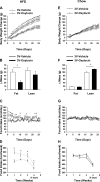
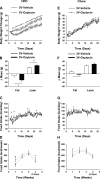

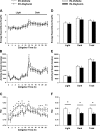
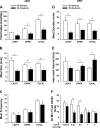

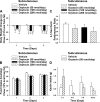

Similar articles
-
Chronic hindbrain administration of oxytocin is sufficient to elicit weight loss in diet-induced obese rats.Am J Physiol Regul Integr Comp Physiol. 2017 Oct 1;313(4):R357-R371. doi: 10.1152/ajpregu.00169.2017. Epub 2017 Jul 26. Am J Physiol Regul Integr Comp Physiol. 2017. PMID: 28747407 Free PMC article.
-
Peripheral oxytocin suppresses food intake and causes weight loss in diet-induced obese rats.Am J Physiol Endocrinol Metab. 2012 Jan 1;302(1):E134-44. doi: 10.1152/ajpendo.00296.2011. Epub 2011 Oct 18. Am J Physiol Endocrinol Metab. 2012. PMID: 22008455 Free PMC article.
-
Intranasal oxytocin reduces weight gain in diet-induced obese prairie voles.Physiol Behav. 2018 Nov 1;196:67-77. doi: 10.1016/j.physbeh.2018.08.007. Epub 2018 Aug 23. Physiol Behav. 2018. PMID: 30144467 Free PMC article.
-
Fat intake and energy-balance effects.Physiol Behav. 2004 Dec 30;83(4):579-85. doi: 10.1016/j.physbeh.2004.07.027. Physiol Behav. 2004. PMID: 15621063 Review.
-
Fat and energy balance.Ann N Y Acad Sci. 1997 Sep 20;827:431-48. doi: 10.1111/j.1749-6632.1997.tb51853.x. Ann N Y Acad Sci. 1997. PMID: 9329773 Review.
Cited by
-
Acute Hypophagia and Changes in c-Fos Immunoreactivity in Adolescent Rats Treated with Low Doses of Oxytocin and Naltrexone.J Clin Med. 2021 Dec 23;11(1):59. doi: 10.3390/jcm11010059. J Clin Med. 2021. PMID: 35011797 Free PMC article.
-
High-calorie diets uncouple hypothalamic oxytocin neurons from a gut-to-brain satiation pathway via κ-opioid signaling.Cell Rep. 2023 Oct 31;42(10):113305. doi: 10.1016/j.celrep.2023.113305. Cell Rep. 2023. PMID: 37864798 Free PMC article.
-
Effect of Oxytocin on Hunger Discrimination.Front Endocrinol (Lausanne). 2019 May 15;10:297. doi: 10.3389/fendo.2019.00297. eCollection 2019. Front Endocrinol (Lausanne). 2019. PMID: 31156549 Free PMC article.
-
Oxytocin and Vasopressin Systems in Obesity and Metabolic Health: Mechanisms and Perspectives.Curr Obes Rep. 2019 Sep;8(3):301-316. doi: 10.1007/s13679-019-00355-z. Curr Obes Rep. 2019. PMID: 31240613 Review.
-
The effects of oxytocin on eating behaviour and metabolism in humans.Nat Rev Endocrinol. 2017 Dec;13(12):700-709. doi: 10.1038/nrendo.2017.115. Epub 2017 Sep 29. Nat Rev Endocrinol. 2017. PMID: 28960210 Free PMC article. Review.
References
-
- Altirriba J, Poher AL, Caillon A, Arsenijevic D, Veyrat-Durebex C, Lyautey J, Dulloo A, Rohner-Jeanrenaud F. Divergent effects of oxytocin treatment of obese diabetic mice on adiposity and diabetes. Endocrinology 155: 4189–4201, 2014. - PubMed
-
- Amico JA, Vollmer RR, Cai HM, Miedlar JA, Rinaman L. Enhanced initial and sustained intake of sucrose solution in mice with an oxytocin gene deletion. Am J Physiol Regul Integr Comp Physiol 289: R1798–R1806, 2005. - PubMed
-
- Arletti R, Benelli A, Bertolini A. Influence of oxytocin on feeding behavior in the rat. Peptides 10: 89–93, 1989. - PubMed
-
- Arletti R, Benelli A, Bertolini A. Oxytocin inhibits food and fluid intake in rats. Physiol Behav 48: 825–830, 1990. - PubMed
-
- Bamshad M, Song CK, Bartness TJ. CNS origins of the sympathetic nervous system outflow to brown adipose tissue. Am J Physiol Regul Integr Comp Physiol 276: R1569–R1578, 1999. - PubMed
Publication types
MeSH terms
Substances
Grants and funding
LinkOut - more resources
Full Text Sources
Other Literature Sources

